The Mau Son mountain range of Lang Son province stretches across Cong Son and Mau Son communes in Cao Loc district and Mau Son commune in Loc Binh district. On this massive and highest mountain range of Lang Son province as well as the northeastern region of Vietnam, there are many ethnic groups living. The Dao ethnic group is the majority here and is an ethnic group with unique cultural identity and customs, including traditional costumes.
 The Dao people's costumes in Mau Son are hand-woven from hemp and cotton. When the hemp and cotton plants are ready for harvest, the Dao people bring them back to process into smooth threads and weave them into fabric. Once the fabric is finished, they dye it indigo to the desired color. Every year around July, people harvest indigo leaves and soak them in water.
The Dao people's costumes in Mau Son are hand-woven from hemp and cotton. When the hemp and cotton plants are ready for harvest, the Dao people bring them back to process into smooth threads and weave them into fabric. Once the fabric is finished, they dye it indigo to the desired color. Every year around July, people harvest indigo leaves and soak them in water.  The leaves are soaked and rotted, then filtered to get the juice, then add lime powder and ash water and stir well. When the water settles for a few days, it will become indigo extract. This extract is boiled with mugwort leaves, add a little ash and a little alcohol to make fabric dye. The dyed fabric must be evenly soaked and dried several times to get the right consistency. Once the fabric is successfully dyed, it will be taken out to be sewn or embroidered as desired.
The leaves are soaked and rotted, then filtered to get the juice, then add lime powder and ash water and stir well. When the water settles for a few days, it will become indigo extract. This extract is boiled with mugwort leaves, add a little ash and a little alcohol to make fabric dye. The dyed fabric must be evenly soaked and dried several times to get the right consistency. Once the fabric is successfully dyed, it will be taken out to be sewn or embroidered as desired.  Dao mothers and grandmothers teach their daughters and granddaughters weaving and embroidery from a young age. Dao girls all know how to sew their own most beautiful clothes to wear on their wedding day or during festivals. To embroider a satisfactory outfit, they have to work hard for many months, even a whole year.
Dao mothers and grandmothers teach their daughters and granddaughters weaving and embroidery from a young age. Dao girls all know how to sew their own most beautiful clothes to wear on their wedding day or during festivals. To embroider a satisfactory outfit, they have to work hard for many months, even a whole year.  The colored threads through skillful hands have helped the dresses become beautiful and lively. The women embroider on the shirts and skirts various patterns, motifs or shapes such as plants, flowers, birds. The embroidery lines are meticulous, sophisticated and symmetrical, showing the diligence as well as the soul and fresh vitality of the Dao people. The main colors in the embroidery lines are yellow, red, green, making the costumes always stand out and attractive.
The colored threads through skillful hands have helped the dresses become beautiful and lively. The women embroider on the shirts and skirts various patterns, motifs or shapes such as plants, flowers, birds. The embroidery lines are meticulous, sophisticated and symmetrical, showing the diligence as well as the soul and fresh vitality of the Dao people. The main colors in the embroidery lines are yellow, red, green, making the costumes always stand out and attractive.  Women often wear a four-panel ao dai with a split front and a yếm dress underneath. Their dresses, in addition to thick layers of embroidered patterns, are also decorated with colorful, elegant beads. Around the waist, they tie a white cloth strip with meticulous, delicate embroidery.
Women often wear a four-panel ao dai with a split front and a yếm dress underneath. Their dresses, in addition to thick layers of embroidered patterns, are also decorated with colorful, elegant beads. Around the waist, they tie a white cloth strip with meticulous, delicate embroidery. 
The Dao men's clothing is much simpler. Their shirts are usually dark, decorated with colorful tassels to make them stand out more. They wear a turban or a scarf on their heads. Their wide-legged, half-waisted pants are tied with hemp cords and have coins as buttons to hold the waistband. The Dao people love silver jewelry, so on important occasions, they often attach silver stars to their dresses, wear silver chains on their hips, wear large silver earrings in their ears, and wear many silver bracelets on their hands.

Regarding headgear, Dao women here wear a red roof-shaped hat with many beaded tassels and a veil. They also have a very special Tam Phja scarf with colorful hand-embroidered patterns and many circles of beads. In the middle of the circle is a large white silver star. Dao women can only wear this scarf twice in their life, once on their wedding day and once when they are older in the "red thread" ceremony of the great coming-of-age ceremony (seven lamps or more) of their husband.

When Tet comes, the Dao people bathe in traditional medicinal leaves to wash away the worries of the old year and then put on their newest and most beautiful clothes to wait for the New Year's Eve, praying for a prosperous and peaceful new year... In the Dao people's coming-of-age ceremony in Mau Son, Dao men wear red, buttoned-front long dresses with colorful phoenix prints, round-brimmed hats with pointed tips protruding backwards, and a piece of paper with a human face printed on it on the front, walking around singing and ringing bells loudly.
 The Dao people's way of dressing in Mau Son is even more uniquely expressed in their wedding attire. On the wedding day, everyone wears their most beautiful new clothes to attend the ceremony. The bride and groom are dressed with the utmost care by both families. The groom usually wears a dark-colored ao dai over long pants, a large scarf over his shoulders, and a long red-yellow embroidered brocade scarf.
The Dao people's way of dressing in Mau Son is even more uniquely expressed in their wedding attire. On the wedding day, everyone wears their most beautiful new clothes to attend the ceremony. The bride and groom are dressed with the utmost care by both families. The groom usually wears a dark-colored ao dai over long pants, a large scarf over his shoulders, and a long red-yellow embroidered brocade scarf.  On the head is a hat and a dark veil. The bride's dress is much more elaborate. In addition to the dowry, the bride must have two sets of clothes to go to her husband's house. One set when leaving her parents' house and one set to change into before entering the groom's house. The bride's costume includes a veil, a multi-layered long dress with pants and four belts. Each costume of a Dao bride has on average from 3 to 10 layers. In more prosperous families, the bride's costume will have more layers.
On the head is a hat and a dark veil. The bride's dress is much more elaborate. In addition to the dowry, the bride must have two sets of clothes to go to her husband's house. One set when leaving her parents' house and one set to change into before entering the groom's house. The bride's costume includes a veil, a multi-layered long dress with pants and four belts. Each costume of a Dao bride has on average from 3 to 10 layers. In more prosperous families, the bride's costume will have more layers.  The groom's family eagerly welcomed the bride from early morning, while the bride nervously prepared all her belongings and belongings for the journey. Before entering the groom's house, the bride's family would stop so that the bridesmaids could help change the bride's clothes. At this time, the bride would put on a necklace, bracelet, and silver jewelry. On the hands of the bride and groom, a white cloth embroidered with simple patterns was neatly arranged for the worship ceremony.
The groom's family eagerly welcomed the bride from early morning, while the bride nervously prepared all her belongings and belongings for the journey. Before entering the groom's house, the bride's family would stop so that the bridesmaids could help change the bride's clothes. At this time, the bride would put on a necklace, bracelet, and silver jewelry. On the hands of the bride and groom, a white cloth embroidered with simple patterns was neatly arranged for the worship ceremony.Heritage Magazine


![[Photo] Binh Trieu 1 Bridge has been completed, raised by 1.1m, and will open to traffic at the end of November.](https://vphoto.vietnam.vn/thumb/1200x675/vietnam/resource/IMAGE/2025/10/2/a6549e2a3b5848a1ba76a1ded6141fae)













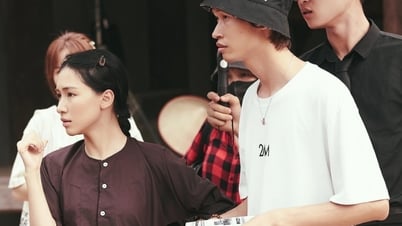

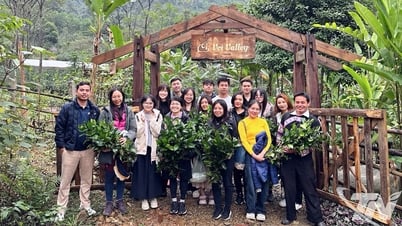



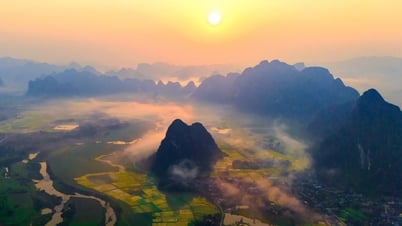










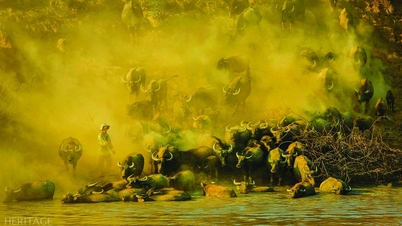


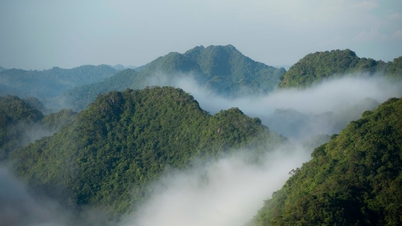
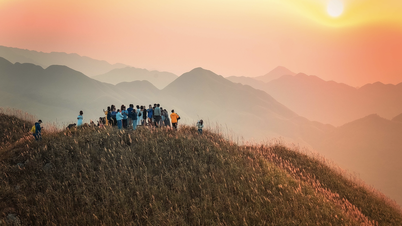














































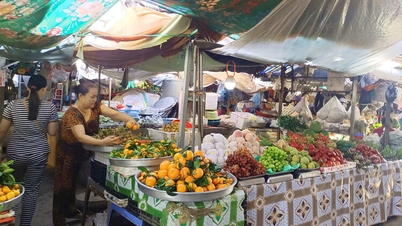

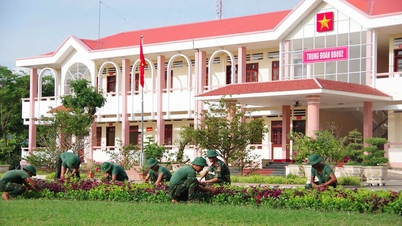
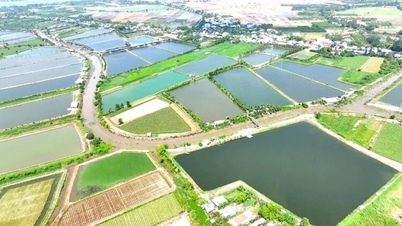
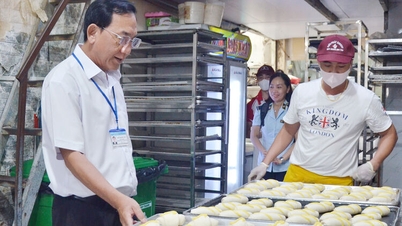
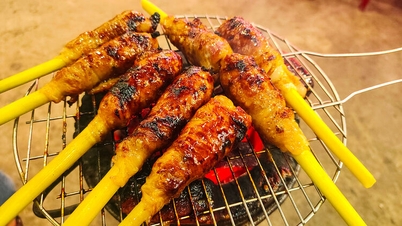
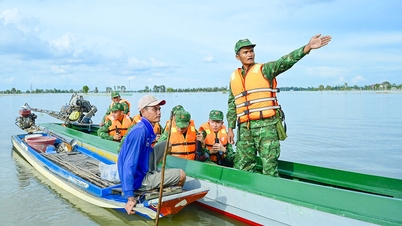













Comment (0)